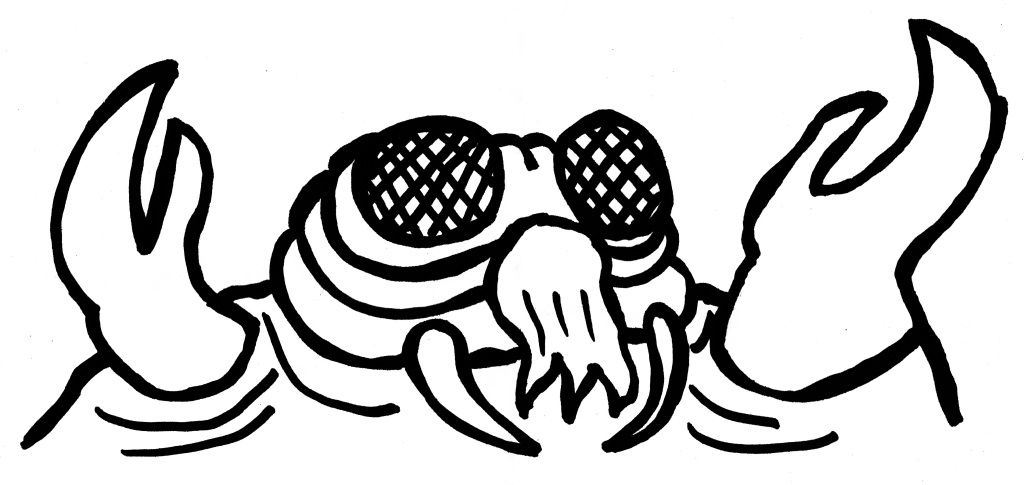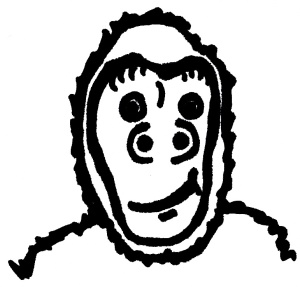
Sometimes it takes more than one of us to tackle a film. Those are the times when we need a Swampchat.
Brandon: Reading over your review of Jurassic World was a refreshing experience. When I left the theater I felt an intense love-hate combo that had me a little more lukewarm on the film than you were, but I gotta say your enthusiasm is a little infectious after-the-fact. It’s good to take a step back and remember that “The predictable plot and characters aren’t the main selling point for this movie. It’s all about the dinosaurs!” The over-the-top dino action was certainly what got my butt in the seat, and the movie did deliver on that front, but I gotta admit that butt was squirming at the dialogue once it got there. As you alluded to in your review, the character Claire, played by Bryce Dallas Howard, was particularly groan-worthy on this front, serving as the “ball-busting” ice queen career woman stereotype no one was eager to see return to the big screen (hopefully no one, anyway).
As much as I enjoyed your enthusiasm for the movie’s dino action, I think you could’ve been even harder on Bryce Dallas Howard’s role in the film. I’m not going to mince words here. I honestly believe she might have been the most poorly conceived/written/acted/employed character I’ve ever seen in a movie this expensive. She was beyond awful. Just horrendous. But, once you accept how atrocious Claire is the whole thing becomes a fairly hilarious joke. For me that turning point came very early in the film, on an orgasmic helicopter ride (you have to see it to believe it) and lasted all the way throughout, or at least until she was making eye contact with a garden snake like she was gazing into a mirror. I’ve rarely been this simultaneously infuriated & tickled by a single performance before. It’s one for the camp record books.
Britnee, did you manage to find any humor in Bryce Dallas Howard’s performance or was the sexist implications of how she was written sour your reaction to her completely? Am I also being too hard on the actress or did was she really that inhuman in the role? I feel like I saw more human behavior from ScarJo in Under the Skin, but a lot of that could potentially be blamed on the script . . .
Britnee: I think I would have to watch the film again to see anything other than disappointment and annoyance with Claire’s character. We are usually on the same page when it comes to finding the camp value in crappy movie characters/actors, so I’ll give Campy Claire another shot. What was more disappointing than her character was the theater audience’s reaction to her sexist traits. When she was running in heels or trying to act tough and pretty for Owen, everyone belted out laughs. Someone even said “What an idiot!” There was one part in the film that sort of sums up Claire’s role in Jurassic World. She’s sitting in the driver’s seat (or passengers seat) of a truck while her nephews are in the back, and she attempts to calm them down by offering her protection. They immediately point to Owen and say something like “Um, can we go with him?”
Basically, Claire was useless and only in this film to be a joke and a pretty face. This is the only other film I’ve seen with Bryce Dallas Howard other than Lady in the Water, which is one of my favorite films. Her role in that film didn’t require great acting at all, so I’m not really sure if she’s a good actress or not. As for you’re harsh words about Dallas and Claire, they were 100% justifiable considering that the acting was crap and the role was the worst.
Brandon, do you think that all of the film’s dinosaur goodness makes up for Claire’s flaws? What was your favorite dino moment?
Brandon: I left the theater feeling very strangely conflicted on this one. Your initial review made it sound like the dino action overwhelmed a lot of the more unsavory elements for you & I’m totally there with a lot of the scenes. The trained raptors, the Pterosaurs swarm, and the climactic battle between (vague spoiler?) the old guard & the newest attraction were all fist-pump worthy elements that had me excited like the tiniest of children. However, I couldn’t shake the feeling that the film as a whole was just grossly off to the point where it could’ve been renamed Jurassic Park IV: A Woman’s Place Is Sidelined In The Van With The Kids or JP 4: Quiet Everyone, A White Man Is Talking. In the end I was half enthusiastic & half turned off. It was a strange sensation. To be fair to Bryce Dallas Howard, she was far from the only problem the movie had souring its more universally-enjoyable dino action, but she does serve as a convenient (and often hilarious) example of what the film gets wrong.
I think part of the reason I had fun with how awful Claire is in the film is because I had to. It was like a strange defense mechanism, as if my brain couldn’t handle something so egregiously wrong mucking up the pleasure I was getting from the trained raptor army & terrorized Jimmy Buffets of the film. Bryce Dallas Howard’s cold, implausible, entirely inhuman performance certainly helped things there, since it was easy to accept the idea of abandoning any non-camp enjoyment I could pull from her presence very early in the proceedings.
Britnee, one of the things I found most interesting in your review is the idea that Claire was especially regressive when viewed in contrast with Laura Dern’s turn as Ellie Sattler in the first Jurassic Park film, released more than two decades ago. However, there are some similarities between her character & the similarly career driven, baby hatin’ Alan Grant, played by Sam Neill in that film. Do you think that if Claire were less of a casual observer & more of an active participant like Dr. Grant, she would’ve been more of a palatable character? Or does gender-swapping those character traits pretty much guarantee the laughably bad performance that was delivered?
Britnee: Now that you mention it, there are a good bit of similarities between Claire and Dr. Grant. The idea of this most likely accidental gender swap sheds a new light on Claire’s character. Her attitude wasn’t the main thing holding her back from being a likeable character; it was her lack of participation in the nitty gritty of the film. She actually did have one big heroic moment, but unfortunately, it was overshadowed by her negative aspects. When the Indominus rex makes her way near the park entrance, Claire comes up with the brilliant idea of releasing the T-rex, and she even runs to the gate (in those damn heels) to release the dino. Why couldn’t she have had more parts like that? Now don’t get me wrong, she was very intelligent in many parts of the film, much like Dr. Grant, but she just wasn’t very physically active. I think that Owen is actually a big part of this problem. His manly man character was very oppressive and prevented Claire from doing much of anything. Claire and Owen should’ve been a team like Ellie and Dr. Grant, but the filmmakers seemed too focused on making Owen this macho breakout star instead of making Owen and Claire a dynamic duo.
Brandon, what are your thoughts on Owen? Why, especially in this day and age, do you think Jurassic World was so backwards when compared to Jurassic Park? Were the writers purposeful with this mistake or were they just a bunch of doofuses?
Brandon: I’m going to have to side with The Doofus Theory in regards to how this film got so mucked up. This is a major studio project that, although helmed by a director whose first film, Safety Not Guaranteed, had a strong cinematic voice, was most certainly made by committee. The fact that there are four credited screenwriters alone is not a good sign. If director Colin Trevorrow were paired with a single writer, maybe two, there could’ve been a much stronger vision shining through here. Instead, you can just feel the studio’s influence seeping through every frame to the point where producers & screen testers should’ve been given written by credits as well, at least for the sake of transparency. In the scramble to reboot a once mighty, now extinct franchise, Jurassic World makes constant homage to its 1993 ancestor, casually tossing out sly callbacks to all sorts of aspects from the original Jurassic Park with wild abandon. Some of these callbacks worked extremely well, especially when they culminate with the two films’ central monsters battling it out at the climax. However, the purposelessness of the exercise sometimes comes back to bite the movie on its tail, like when Dr. Grant’s child-hatin’ coldness (but not his heroic sense of adventure) get reassigned to a female character without any thought given to what that crucial change implicates.
Chris Pratt’s Owen has a very similar problem. Like the Indominous rex, he’s a creature of design, a classic movie hero seemingly grown in a lab solely to look handsome, squint purposefully, and crack wise. Like the reckless scientists in the film, the studio that created Owen were only trying to entertain the crowds looking for some dino action. They never once considered how dangerous their creation could be, how grotesque it would feel to watch a modern blockbuster in which every woman & POC character in charge would be proven weak & ineffective in contrast to the white man who swoops in to straighten everyone out. Even Chris Pratt’s bountiful charm can’t overcome an obstacle that treacherous & Owen’s flippant The-White-Man’s-In-Charge-Now attitude frequently comes off just as poorly as Claire’s Coldblooded-Damsel-In-Distress routine. Knowing that the effects these characters have on the film were likely a result of too many cooks spoiling the stew does little to help me forgive them for souring an otherwise pretty fun monster movie with a bunch of great, politically blank dinosaur action.
Lagniappe
Brandon: I honestly believe the Rosetta’s Stone of enjoying this film without caveat is personal acceptance of Claire as a campy mess. The awful performance combined with the (perhaps unintentionally) regressive dialogue was consistently humorous to me in the theater and I’m totally okay with that. I don’t need a movie that’s drawing power is mostly dinosaurs eating folks to win me over on an emotional or intellectual level. There wasn’t really enough going on with the film’s characters to provide a worthwhile face-value reading anyway. Claire is 1000% more entertaining as a joke than she is as a sympathetic character. It’s almost all for the best that that effect was unintentional; I wouldn’t want to believe that a final product that egregious was delivered on purpose.
Britnee: I think that I took Jurassic World too seriously during my first viewing because I expected it to be an extension of Jurassic Park. Of course, it is an extension of Jurassic Park, but it’s not as
similar to the first film as I initially thought. The dinosaur stuff was pretty similar, but everything else was totally different in the worst way possible. Now, I’m starting to see the overwhelming amount
of camp contained in the film. Owen the Raptor Man speeding around a dinosaur theme park on a motorcycle, a high-fashion ice queen trekking through dangerous territory in heels, and Jimmy Buffet running away from a dinosaur attack with a margarita in each hand are definitely not elements that would be found in a serious film, so I’m looking forward to watching it a second time with a much different mindset.
-The Swampflix Crew









